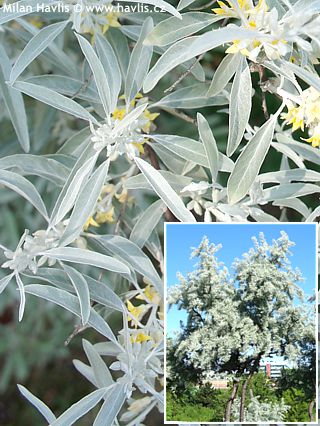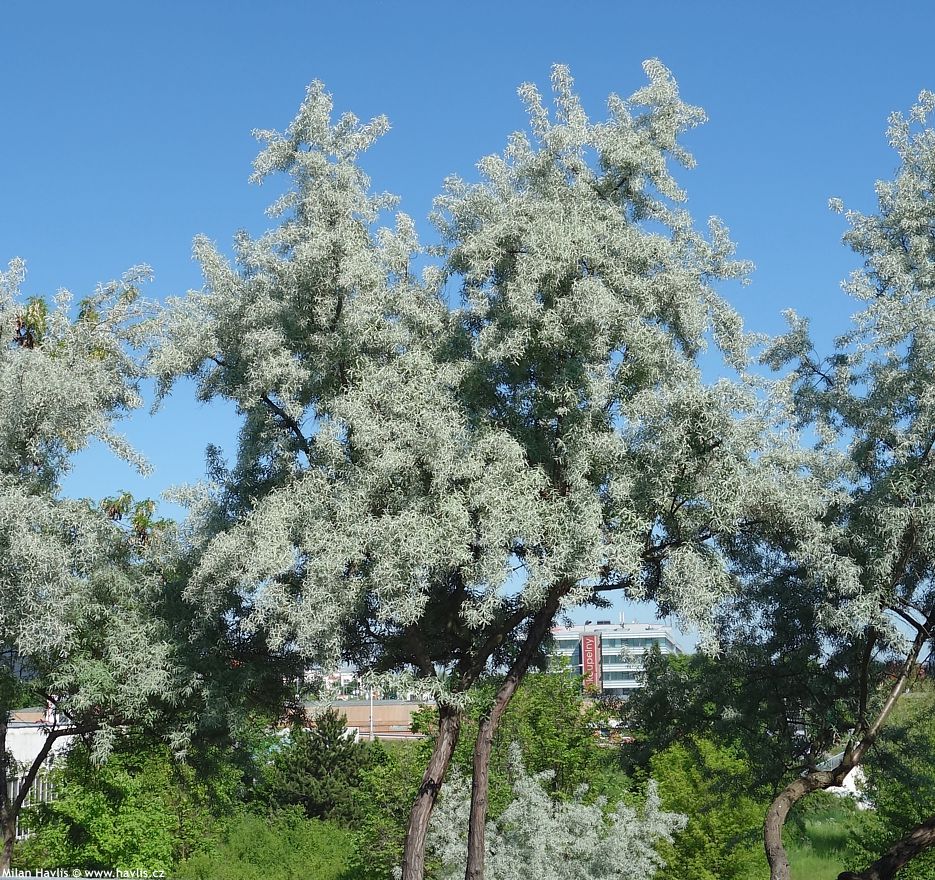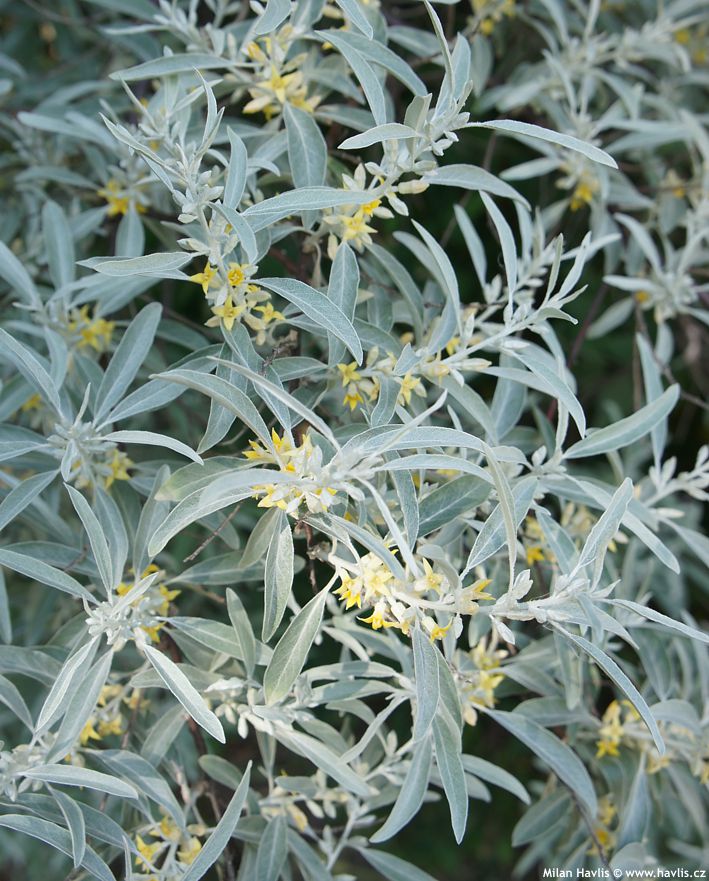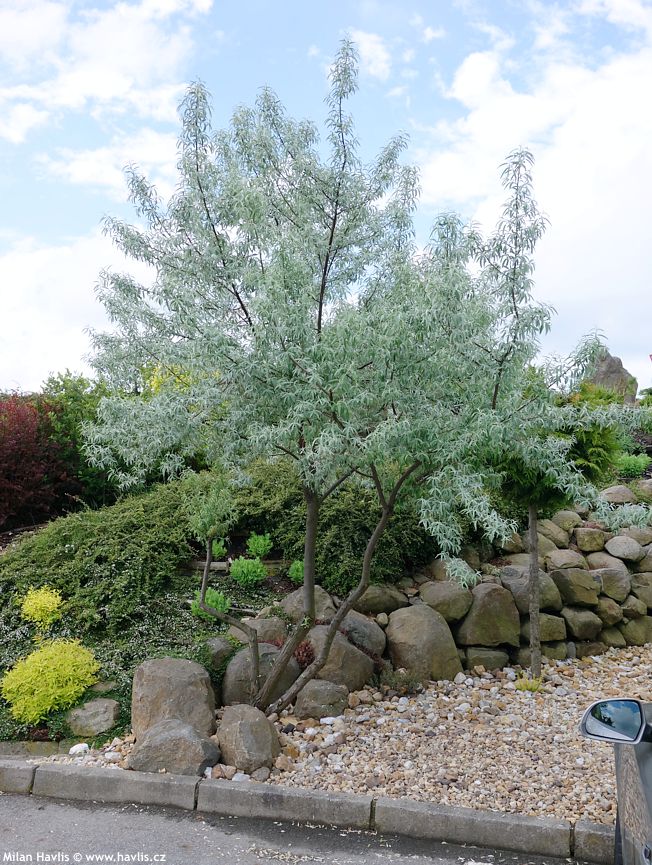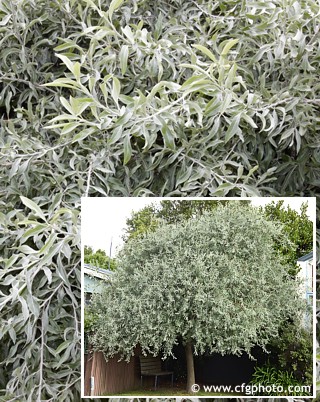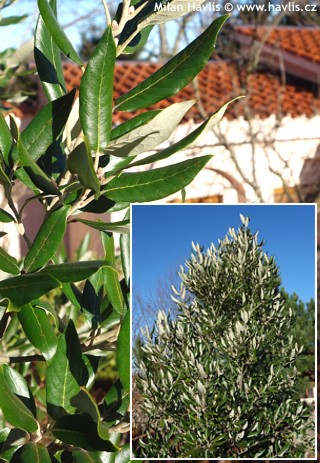Elaeagnus angustifolia oleaster, Russian olive
Oleaster is the oldest species from the genus cultivated in Czechia. It is a small deciduous tree or a tall shrub native to a wide range from the Caucasus, through southern Europe to Central Asia. Its most attractive feature are the narrow, olive-like leaves which appear silvery thanks to their dense indumentum. Small, strongly and sweetly scented, light yellow flowers bloom from May and are followed by edible fruit. The flowers are highly melliferous but at the same time they are a strong allergen, just like birch trees, for example.
It naturally forms multi-stemmed trees and impenetrable thickets, but in nurseries it is often trained into a nice, single-stemmed tree with a canopy above our heads. It is not only beautiful, but also practical because the branches are thorny and if those are way above our reach they do not exhibit any discomfort or even danger. Owing to delicate foliage the canopy looks airy and fluffy and even the slightest breeze can provide some movement. Also, the overall appearance of the tree makes it a fantastic alternative of a true olive tree in countries with a cold climate. Perhaps that’s why its other name is Russian olive.
Oleaster literally thrives almost everywhere, it is undemanding and hardy. In not-too-distant past it used to be planted as a pioneer tree during the reclamation of landfills, old quarries or landfills, but after some time it was discovered that its roots are too invasive and large-scale plantings were stopped. Now it is mainly used as an ornamental and maintenance-free plant in areas from where its roots cannot escape – in islands of urban greenery, which are enclosed on all sides by paving or roads, or near well-maintained lawns, where suckers are controlled by frequent mowing. To limit their growth it is recommended not to dig anything in the area of its roots and stay away from hard or radical pruning so that it does not feel the need to regenerate.
It copes with wind, road salt, drought, heavy, compacted ground, and a lack of soil nutrients. It has the ability to fix nitrogen in its roots which can be used by other plants growing near it. Tree forms require a strong support (staking) for at least 3 years. It does not mind wind, heat, exposed locations, and withstands frosts down to -45 °C (USDA zone 2).
Last update 18-10-2022

































